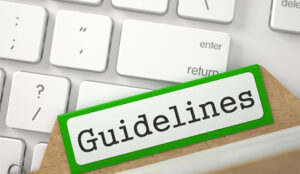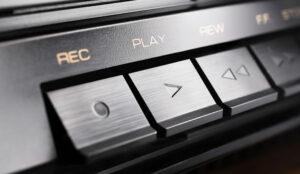What to look for when buying – call recording technology
Recording Software
Three recording options that can change your business for the better
Whether it’s to evaluate the performance of agents, gauge levels of customer interaction and response, or you are simply being driven by compliance issues, call recording is central to the process of turning knowledge into insight. What’s more, call recording helps you gain insight beyond anecdotal stories or bottom line results at the end of the day. And several different levels of recording solutions exist, all of which help to improve your understanding of your operations:
Option 1 – Voice only
Voice only is the most widely used and records either the entire or a part of the agent/customer transaction. It can be set up either as a manual or an automated function. So, for example, a supervisor or agent could manually start recording at an appropriate point by clicking a button on the desktop, or the process can automatically start and stop at specific intervals within an agent’s script.
Recordings are digitally archived on high density storage devices such as DVD jukeboxes and can then be retrieved easily by multiple criteria, including time, date and agent ID. Because of this, the applications for this approach typically satisfy a legal obligation – such as providing proof of a conversation – and are particularly prevalent in the financial services industry. Having said that, voice only recording is also used to monitor individual agent performance for quality and training. Understandably, then, the majority of ‘unified’ customer contact solutions include voice only recording as a standard element of the package.
Option 2 – Voice and data
The next level up in the chain includes data along with the voice. This means that, in parallel with the voice recording, the associated screens and keystrokes made by the agent are also recorded. This type of call recording is required in sectors where the quality of data input is critical to the success of the business. An example might be an inbound telephone sales operation where detailed orders are taken on the phone, and then goods or services are delivered directly to the customer.
In this type of business, customer returns due to data input error can be very expensive, time-consuming and reduce the opportunity for repeat business. By assessing these types of recordings, it is possible to measure quality and performance and therefore identify agents that need additional training or processes that must be modified.
Option 3 – Voice, data and analytics
At the top end of the market, solutions record voice and data and provide analysis for voice transactions as well as other multimedia interaction channels. These solutions are more expensive – up to five times more costly than a basic recording system – and are adopted by companies that need the analytics provided in addition to the recordings.
Typically such analytics include identifying specific trends within market sectors, highlighting bottlenecks in areas of an organisation, and analysing and grading agent performance. But performance monitoring and analytics tools can pinpoint inefficient processes or product trends too. For instance, by analysing the types and content of calls, it may be possible to determine how customers react to certain products which are popular, where there are product faults, and so on. To get the best out of this solution, however, the company must also invest in a team that is tasked to analyse and feedback the results in to the contact centre management process.
Those are the options – what next?
It’s all well and good having three options available, but how do you go about selecting the right solution? In all honesty, your decision will be based on your objectives and budget. Voice recording as outlined in Option 1 meets the needs of most organisations since it is inexpensive, easily retrievable and useful for both compliance issues and quality assurance. When you add data, which means being able to view screens and keystrokes, you add valuable knowledge on what occurs during the transaction. But you also add more processing and storage requirements.
Finally, by adding in analytics, reporting and trend analysis, you can get a comprehensive picture of what is occurring in your contact centre. And, as long as you have the resources and structures in place to take advantage of it all, these applications will help you turn information into knowledge, and knowledge into insight.
Call recording: The essential questions
At their core, most recording solutions have the same technology – offering the ability to capture both phone calls and agent activity on a computer desktop, archive it and retrieve it in the future. Where the
main differences occur is in the functionality, which in itself is often down to purpose. That is, whether the call recording is being used for compliance, quality assessment, coaching or business intelligence.You may be approaching the selection of interaction recording from any one of these directions, but it’s also worth thinking about how you can leverage additional value from your recording investment through what it can do in the other areas. With this in mind, here are some questions that are worth asking vendors from an application viewpoint, as well as some generic queries and a guide to what you should look for in the answers.
1. Does the solution also allow for 100% recording or logging for compliance purposes?
Logging is the recording application that has the least functionality surrounding it. If you are selecting a recording system for quality or business intelligence purposes, it is worth considering whether logging alone will support all of your needs – both now and in the future.
2. How does the solution support the quality assessment and coaching/development process?
When it comes to quality monitoring and coaching, only a limited number of calls can normally be assessed for each agent or call type. Consequently, solutions need to give you the ability to target specific interactions by agents, contact types and so on, and the selection of these may need to be randomised to make the sample fair and significant.
If 100% recording is used, it becomes a question of whether the date/time, computer telephony integration (CTI) or other data is captured along with the interaction to enable you to select the calls that you require from your call archive. However, some solutions selectively record transactions for you, so you should make sure that CTI, desktop and other data can also be used to successfully target the calls you require.
Very often recordings will be assessed and scheduled by team leaders or centralised quality teams, and this will require calibration to ensure that all individuals consistently apply scores. Typically these scores and recordings will also be fed through to coaching staff, team leaders and agents for training and motivational purposes. Overall results may need to be communicated to the head of quality and other managers too.
Bear all of your requirements in mind. When choosing solutions, see how the workflows within the system can help or be adapted to meet the people and processes within your business.
3. Can the solution practically provide business intelligence?
Contact centres and the enterprises that they serve are now gaining vital business intelligence because of speech analytics within their recording solutions. This technology allows organisations to search through their archived calls and find interactions that contain references to virtually any concept or topic. So, for instance, the marketing department can look for references to competitors’ products and their prices. The compliance team can meanwhile ensure that key phrases are used within calls, and process improvement can see if customers are dissatisfied with parts of the service they receive both in and outside of the contact centre.
Of particular note within speech analytics is the advanced conceptual search technology that enables concepts within interactions to be searched for rather than just words or phrases. This dramatically reduces the time required to locate relevant calls and returns better results as the user does not have to presuppose what words will be used within the interactions they are looking for. The applications for speech analytics in improving quality, compliance, business processes, customer satisfaction and sales and marketing are already compelling and are still being developed. They are moving the value of interaction recording far beyond that produced by quality monitoring and logging alone, so it is well worth considering what business intelligence requirements you may have in the future.
4. How can I integrate other call centre systems and what value is this likely to provide?
Increasingly recording for quality monitoring is considered a part of a workforce optimisation set, including other applications likee-learning and workforce management. As such there has been greater consideration given to interoperability and sharing of information between these systems. But don’t think solely about workforce optimisation. Also consider integrating other systems within your contact centre, such as agent analytics/performance management, skills management, HR/payroll and automatic call distributors (ACDs). Exchange of information with these systems may also offer benefits. While integration is important, consider carefully what part of a solution is likely to generate the greatest value for your business.
A good call recording system that closely meets your logging or quality monitoring needs may offer you a better return on investment (ROI) than something that integrates to other parts of a suite but without a clear ROI on it. Additionally, think about whether, by choosing one suite over another, you potentially compromise the capability of other systems like e-learning and workforce management, simply because of your preference for the call recording part or an integration ideal.
With the emergence of service oriented architectures (SOA) and business process management (BPM) tools, connecting systems together becomes easier to achieve. This also means that, in the future, businesses can afford to be less concerned about the pre-integration offered by suites and can instead concentrate on what functionality delivers the greatest value for them here and now.
What’s more, SOA means that organisations do not have to consider displacing all of their current and previous solution investments for reasons of integration and can continue to extract value from these.
For more information on integration of call recording technologies, read this article.
Five considerations to make your call recording purchase seamless
1. Think before you buy
Some companies need to record calls for compliance purposes. Some want to streamline and objectively measure agent performance while others will want to be more aware of the ‘customer experience’ to address customer retention issues. Whatever your needs, be certain why you are buying call recording and be clear about your objectives. It’s the easiest thing in the world to overlook how far-reaching an impact call recording can have in the call centre, so it’s a shame not to take full advantage of its potential at the outset and build this in to your business case to justify the investment.
2. Get your house in order
Make sure you are in a position to benefit from this implementation as early as possible. For example, you need to be certain that key personnel can be trained to use the system, post implementation, rather than waiting many months to properly use and realise the benefits of it. Also, if call recording will rely on other aspects of the business, such as logistics and warehousing, you need to be sure that these parts of the business are involved too, so that everyone gets what they need from it. The best way to approach this is to carry out an audit to see what needs to be in place so that you can work to realistic and workable timescales.
3. How much recording do you need?
For some companies, 100% recording is a must for compliance, so the question is out of their hands. For others, selective recording might be the way forward. However, if you only need to record a random number of calls, you will need a call recording solution that can easily select calls that are of value to your business. We are seeing a more widespread need to record all calls, so how can a trend of 10% in a sample of only 10% of the calls really be a trend? Some companies are ripping out existing call recording systems because finding the calls of value to the business takes too long and the system is not worth keeping. It’s therefore worth considering both your current and potential future recording needs before you make your purchase.
4. How easy is it to use?
Technology should be easy to use. Supervisors’ and managers’ time istoo precious to be wasted on a system that is not efficient or fit for purpose. If they find it easy to use, the chances are it will be absorbed in to everyone’s day-to-day routine. And it isn’t just managers and supervisors who need to use the system; many agents will need to access it too – perhaps to self-score their own performance or to review ‘best practice’ clips at their desktop.
5. Do you just need to record?
Ask yourself whether you need to go beyond call recording? Many companies are using analytics software in their contact centre to improve the customer experience and to help agents with their performance. There’s a host of benefits that can be achieved by using this software, such as identifying particular types of calls using speech recognition or by using the software to ‘listen in’ on your behalf and identify patterns of behaviour. Typically, these might include calls being transferred too readily or customers calling back several times to get the information they need. Remember, it doesn’t have to stop at call recording – there are many other additional tools you can use in order to achieve very significant benefits in your call centre.
Further Reading
- Call Recording Case Studies
- Questions to ask your Call Recording Supplier
- A list of Call Recording Suppliers
- Recording Calls In Contact Centres
- A-Z of call recording features
- An A-Z of Speech Analytics Features
Contributors
- Dudley Larus of Amcat
- Martin Blacher of QPC
- Robert Wint of Verint Systems
Author: Jonty Pearce
Published On: 14th Mar 2010 - Last modified: 27th Aug 2025
Read more about - Technology, Call Recording, Dudley Larus, Noble Systems, Robert Wint





































